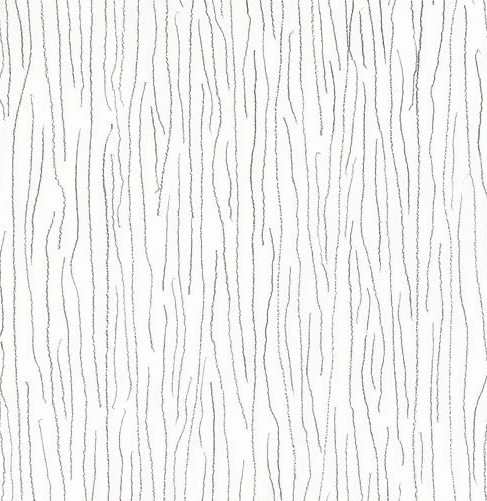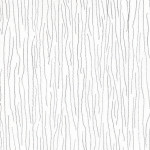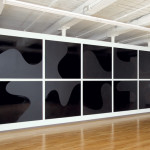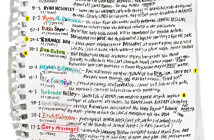SOL LEWITT @ MASS MOCA (LEWITT AGAIN: DRAWING CONCLUSIONS)
Why not draw a line that does not end? One could be made by extending the instructions of Sol LeWitt's Wall Drawing 51: All architectural points connected by straight lines. From inside the room itself with its surveyor¹s account of beam ends, exit signs, and fire alarms, the snap lines would stretch out to form the grid of every architects universe, traced like an ex post facto blueprint on the landscape.
So I followed those fantasy threads back to the exhibit for this inevitable sequel to my first reflection (in Issue #100). The glut of it all makes intermissions inevitable. The vast catalogue of LeWitt crammed here is both stupendous and oppressive, with none of the relief or contrast that is provided when one of the drawings is set alone among the work of others.
One must choose from the drawings, force each choice into isolation, and refuse to make comparisons between them.
-
Wall Drawing 46, Vertical lines, not straight, not touching, covering the wall evenly, has a black pencil transparency of lines, like the dust of a fresco cartoon. It is a memorial to Eva Hesse created immediately after her death as if the grieving silence of shiva the Jewish funeral ritual could be visualized and inscribed.
Wall Drawing 86, Ten thousand lines about ten inches (25 cm) long, covering the wall evenly, is an exercise in wave lengths, measuring the conversations of line with line.
Wall Drawing 396, A black five-pointed star, a yellow six-pointed star, a red seven-pointed star, and a blue eight-pointed star, drawn in color and India ink washes, the resonance of the yellow star carries beyond simple geometry, the other shapes now imbued by association with new murderous segregations which they might now represent.
Wall Drawing 901, Color bands and black blob, with an oil spill or stellar void that bursts through the vertical grid like a dismissal of the past.
Wall Drawing 824, A, B, C, E, F, G, H, J, K, L, M, N , A black square divided in two parts by a wavy line. One part flat; one glossy, in which Ad Reinhardt tonalities of black are rendered cartoonish and exaggerated in scale. The sheen and brightness of these 1990's works lurch between the destructive and the decorative. They play on shapes like Josef Albers for comic books, or cheap puzzles of perspective by Vasarely. There are no more asymmetries by surprise. LeWitt seems weary of it all.
But at the end, especially in the scribbled graphite shapes executed for the first time here, the law of LeWitt comes back into force. All the best of the drawings have in their precise instructions the art of command of submitting the world to the artist¹s image of it.
So how important is it that these works are actually executed, in some cases having perhaps driven close to madness those who so faithfully carried out the directions? What if the exhibition had been limited to the printed descriptions alone, offering them as texts for the imagination? It should at least be clear that the works collected here are not imprisoned, even if they have been given a sentence of over twenty years. The words of their making are still free to scatter them into their singularities, a diaspora of drawn walls.
- Sol LeWitt, Wall Drawing 46, Vertical lines, not straight, not touching, covering the wall evenly; May 1970, Black pencil, LeWitt Collection, Chester, Connecticut.
- Sol LeWitt, Wall Drawing 396, A black five-pointed star, a yellow six-pointed star, a red seven-pointed star, and a blue eight-pointed star, drawn in color and India ink washes; May 1983, India ink wash and color ink wash, LeWitt Collection, Chester, Connecticut.
- Sol LeWitt,Wall Drawing 824, A black square divided in two parts by a wavy line. One part flat; one glossy; April 1997, Acrylic paint, 824A,B,C,E,F,H,J,K,L,M,N: Courtesy of the Estate of Sol LeWitt (Designated for Yale University Art Gallery) 824G: Lent by Alan Gibbs.
"Sol LeWitt: A Wall Drawing Retrospective" is on view until 2033 at MASS MoCA, located at 87 Marshall St. in North Adams, MA.
All images are courtesy of the Estate of Sol LeWitt and MASS MoCA.







